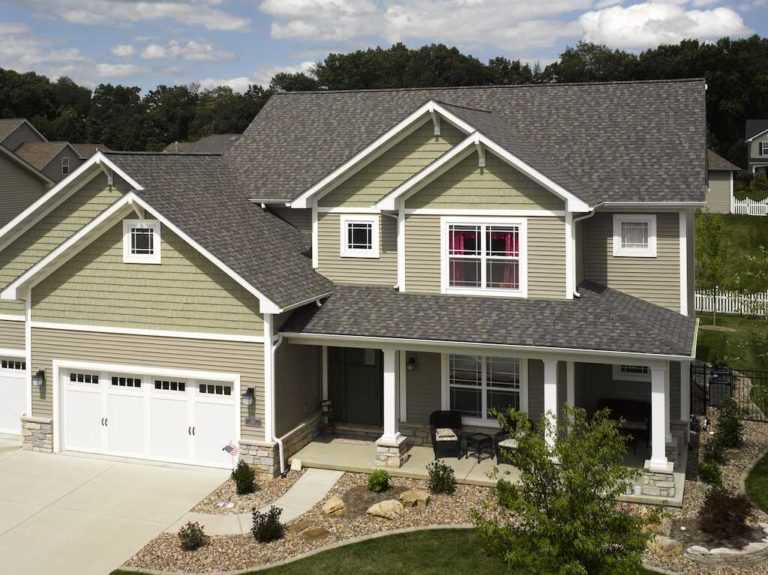Lashing rain and howling winds can do significant damage to your home. Due to the fact that your roof is often the first thing that these elements come in contact with, it is no surprise that it is likely to suffer damage. As you can imagine, ignoring roof damage suffered during a severe storm can have far-reaching consequences. This makes it imperative that you act quickly to address the situation. The first thing you need to do is assess the problem to develop a plan.
Recognizing the Types of Roof Damage From Storms
Extreme weather conditions can cause significant roof damage of your home. This makes it vital to inspect your roof after a storm hits to determine if you have any problem areas that need to be addressed. There are a variety of ways that storms can damage your roof.
Damage Caused by Winds
Winds have the ability to uproot trees entirely. They can also rip shingles off your home and leave the underlayment completely exposed. After a significant storm, you want to look for any signs of broken branches or downed trees in your area. When inspecting your roof itself, look for any trees or branches that may be stuck on top of your home or in your gutters.
Damage Caused by Snow and Rain
Rain and snow can cause severe roof damage, as well. Days of heavy rain have the potential to wear down your shingles. Ice and heavy snow can cause the materials on your roof to expand, preventing them from functioning correctly. Over time, a significant amount of rain and snow can clog up your gutter system, preventing water from draining down and away from your home like it is supposed to. This can cause the water to back up onto your roof, pool up, and even penetrate through the underlayment, roof decking, and other structural components. This can lead to severe damage, including the growth of mold and mildew.
Damage Caused by Hail
Hail can range from a half-inch up to several inches in size. The larger the hail, the more likely it is to cause severe roof damage. Unfortunately, any type of hail storm can cause severe damage to your shingles, gutters, and other components of your roof. Hail has the ability to affect different types of roofing materials and building materials differently. Shingles may lose granules or have holes broken into them. Aluminum shingles may dent and become vulnerable. Detecting the problem early is critical so that you can determine if you need to take action.
Getting a Roof Inspection to Spot Damage
After a storm, it is important to have an inspection performed to determine if your home suffered any roof damage and how extensive the damage may be. The roof is the first line of defense for your home, which makes it imperative to keep it in top condition and good working order. If you notice any signs of damage on your roof, you should seek professional guidance and address the repairs immediately. There are several areas on the roof that you should check for damage during your inspection.
Evaluate Shingle Conditions
There may be obvious signs of damage to your shingles. Seeing pieces of shingles in your yard or not seeing some on your roof are sure signs of damage. Going up on your roof can help you identify any shingles that are cracked, bent, or loose, as these problems are cause for concern. These problems should be addressed in a timely manner to prevent further roof damage.
Look For Gutter Damage or Missing Flashing
Gutter damage can prevent water from flowing to your downspouts and away from your home. This can quickly result in damage to nearly every part of your home, from your roof right down to its foundation. At the sight of damage to your gutters, you need to contact a professional immediately to schedule a repair. Gutter damage caused by storms can include dents, cracks, or even clogs.
Missing or Damaged Flashing
You should inspect your flashing and soffits for signs of damage. Wind and rain have the ability to shift flashing and even break it. This can leave the area that it is protecting vulnerable to water damage. It is important that flashing is tightly secured to the roof along the eaves, chimney, and vents. If you notice any areas that are not properly and securely covered, reach out for help as soon as possible.
Check for Peeling or Loose Sealant
Sealant around your chimney is used to prevent water penetration. When the sealant becomes loose or peels off, it can result in water penetrating through. This can cause severe damage to every area of your roof, which makes it critical that you address the problem as soon as possible.
Look for Water Damage in the Attic
The roof of your home is designed to prevent any water from entering your home. Unfortunately, its ability to provide adequate protection can be compromised by roof damage. When water makes its way through the roof, the first area that you will notice is the attic. You should look for moisture on the ceiling, discoloration, or even mold growth. These are all signs that water is entering through the roof. Additionally, look for any signs of light coming through the ceiling boards.
Check for Broken Trees or Branches
A storm has the power to take down a tree or break large branches. Unfortunately, this type of event can cause severe roof damage. If branches get thrown onto your roof, they can penetrate the shingles and cause water to pass through. A large tree falling can cause major structural damage. Either of these situations can create devastating damage that needs to be addressed quickly.
Contact Our Roofing Experts Today
If you suspect roof damage after a major storm in Delafield, WI, contact Resistance Exteriors! Our team can come to your home and inspect your roof to determine the extent of damages suffered. Our team will provide you with a free estimate for the repairs and can handle the job for you in a reliable, professional, and efficient manner. Call our team now at 262-951-0875 to get started.


